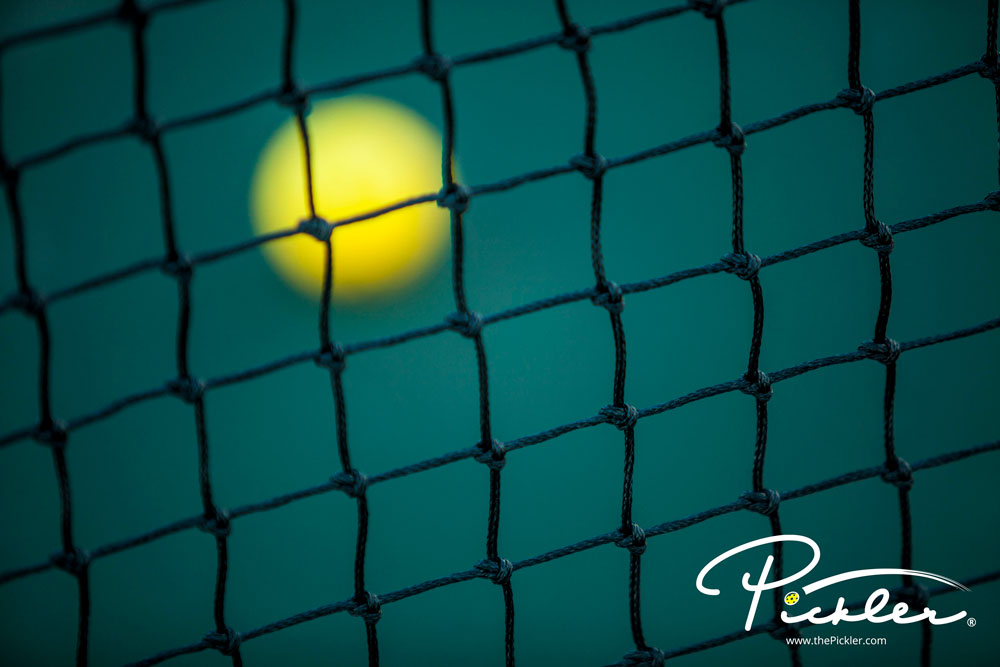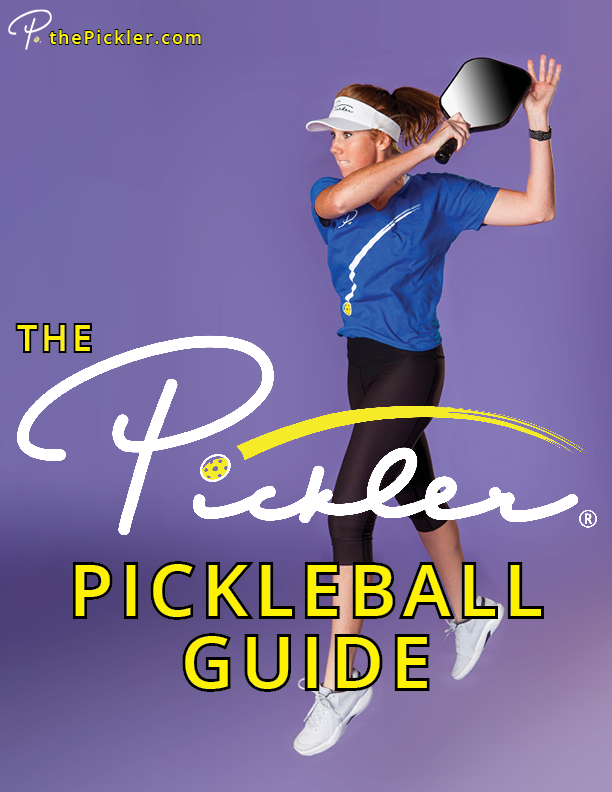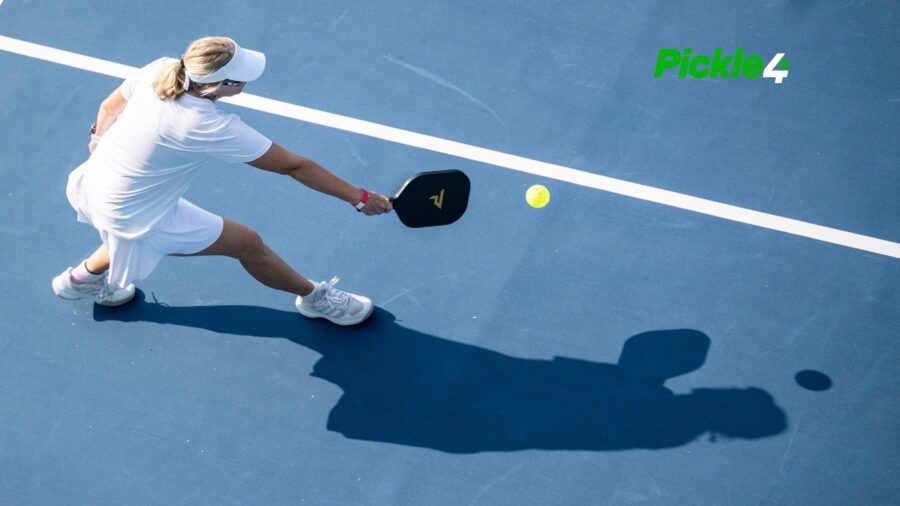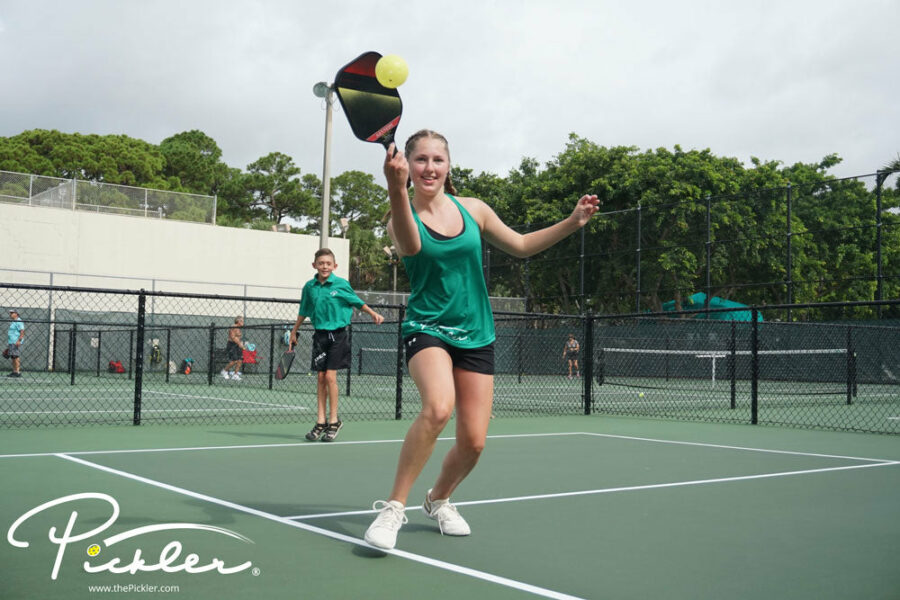There are a handful of commonly misunderstood rules for the sport of pickleball that the Official Rulebook for pickleball calls “other rules.” To note, if you violate any of these other rules, then you would have committed a fault and will lose the rally. As a result, it is important to understand each of these commonly misunderstood pickleball rules and how to avoid violating them.
Double Hits on the Pickleball Court
Double hits are legal on the pickleball courts, but only under certain circumstances. To be a legal double hit, the hit must be (1) unintentional, (2) continuous, (3) a single-direction stroke, and (4) by just one player. If the double hit does not meet any of these four criteria (i.e. the double hit is intentional, not continuous, in multiple directions, or struck by more than one player), then the double hit will result in a fault and the player hitting the pickleball will lose the rally. Double hits are also permitted on the serve.
Switching Hands and Two-Handed Shots on the Pickleball Court
You may switch your pickleball paddle between hands at any time on the pickleball court. You may also hit the pickleball with two-hands on your paddle. This means that a player could hit a right-handed shot, a left-handed shot, and/or a two-handed shot on the pickleball court.
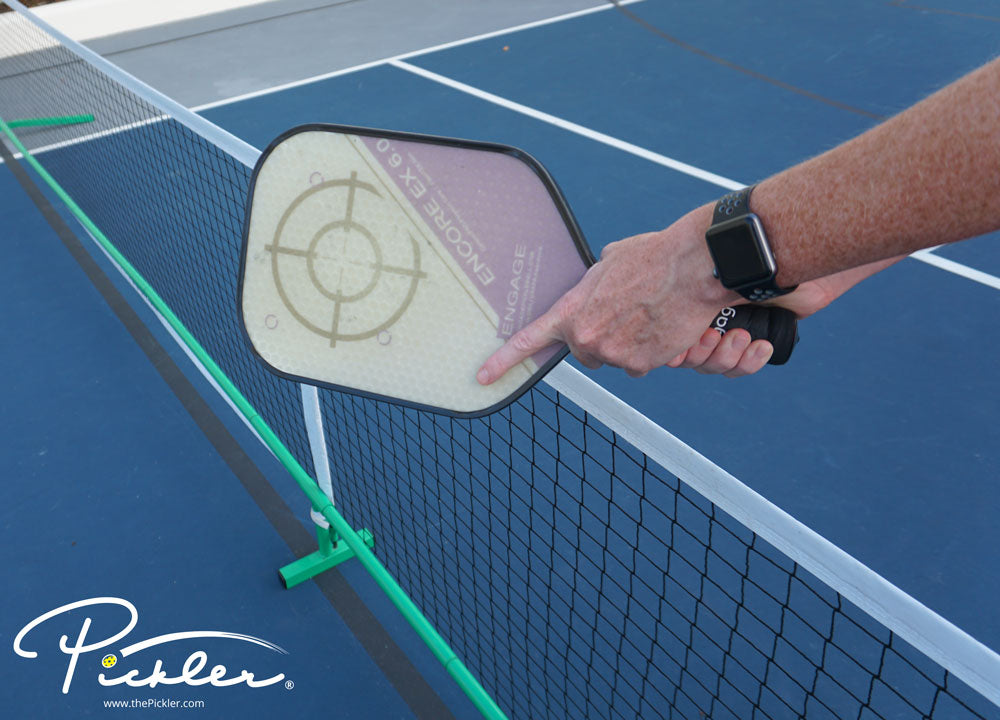
Missed Shots on the Pickleball Court
A swing-and-a-miss (assuming a complete and total miss) does not create a dead ball on the pickleball court. The pickleball will remain in play until the pickleball bounces twice or another fault occurs. So, if you swing-and-miss on the pickleball court, try to keep the rally alive by taking another swing yourself, or encouraging your partner to take a swing, at the pickleball before the pickleball bounces twice or another fault occurs.
To be clear, a swing-and-a-miss must be a complete and total miss. If a player touches or nicks the pickleball ever so slightly, and the pickleball does not travel back to the opposing side of the pickleball court, then a fault would occur immediately upon landing on such player’s side of the pickleball court or hitting any permanent object (like the fence).
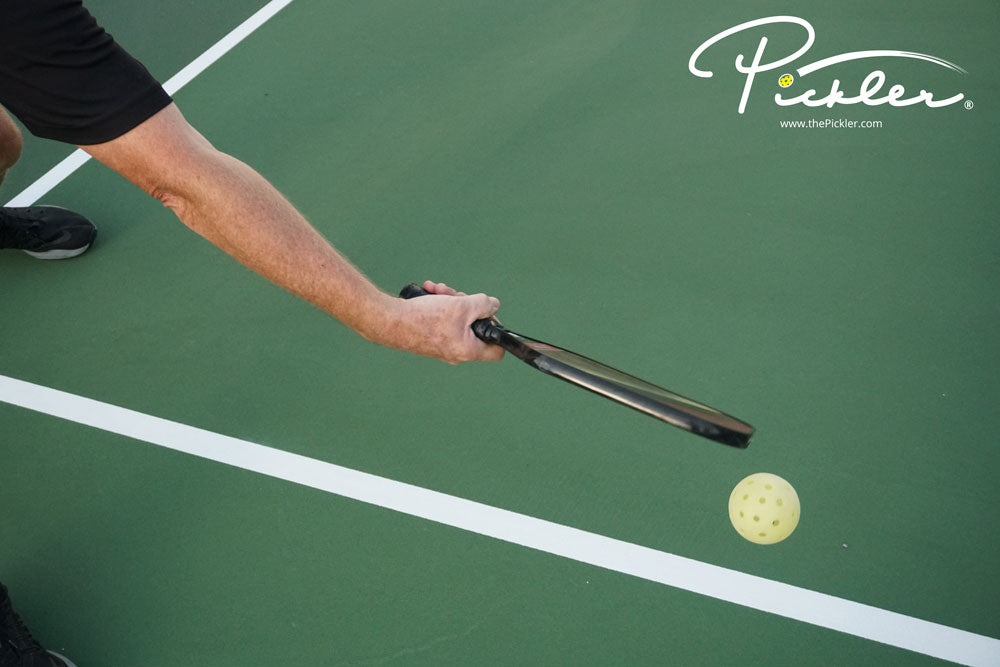
Cracked Pickleball on the Court
If a pickleball is cracked or broken during a rally, then the players on the pickleball court should continue play until the end of the rally. After the rally has ended, and before the next serve, any player on the pickleball court may appeal the rally to the referee (or the opposing player(s)) to determine if the pickleball is in fact broken or cracked. Upon appeal:
- If the pickleball is broken or cracked and there is a referee, then the referee will determine whether the broken or cracked pickleball affected the outcome of the rally. If so, then the rally will be replayed with a new pickleball. If not, then the rally will stand, and the referee will give the players a new pickleball.
- If the pickleball is broken or cracked and there is no referee, then the players on both sides of the pickleball net must agree that the broken or cracked pickleball affected the outcome of the rally. If so, then the rally will be replayed with a new pickleball. If there is a disagreement, then the rally will stand.
- If the pickleball is not broken or cracked, then the rally will stand and the players will continue play.
One key takeaway based on this rule for a cracked pickleball is that, if you suspect a broken or cracked pickleball, focus on your play and finish the rally to the best of your ability. Then, consider whether to appeal to the referee or opposing pickleball player(s).
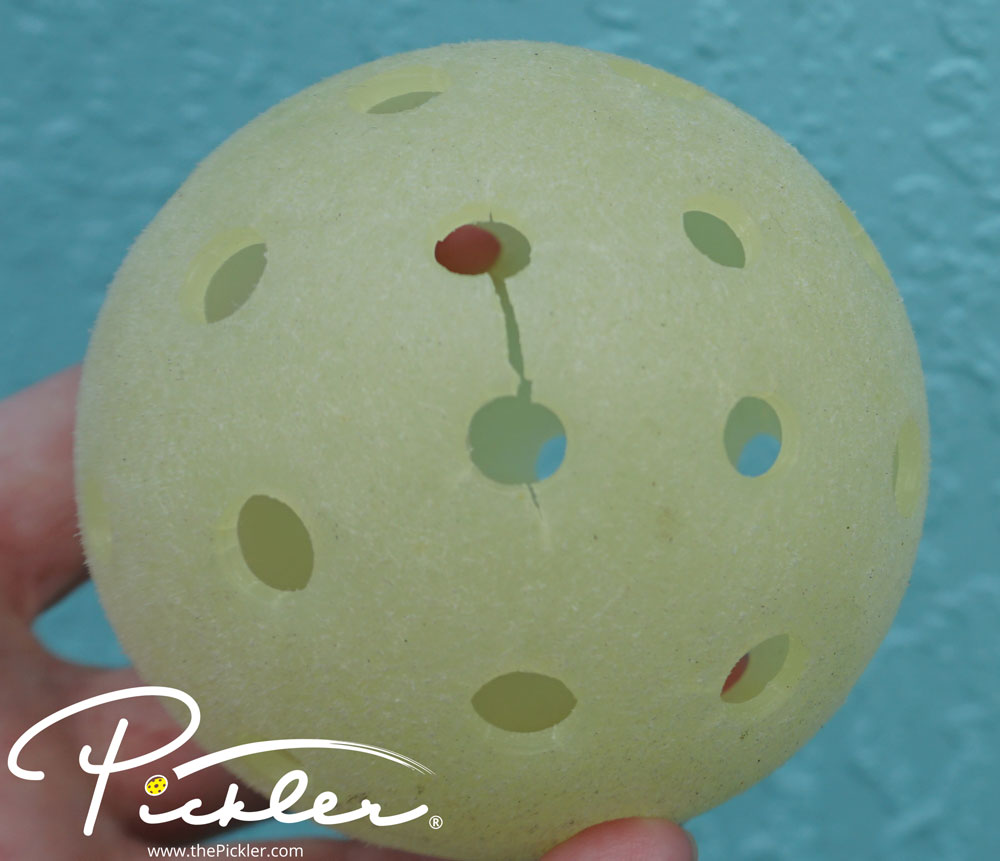
Injury During a Rally on the Pickleball Court
If there is an injury during a rally on the pickleball court, then play continues until the end of the rally. In other words, play continues until a fault or dead ball. Play on the court does not stop because a player may be injured.
With that said, in recreational play (rather than competitive play settings like a pickleball tournament), it is common for pickleball players to immediately stop play when a player is injured. Most players will also replay the point.
Equipment Problem on the Pickleball Court
A rally continues on the pickleball court even if a pickleball player breaks a paddle or loses an item, like a hat or shoe, unless the action otherwise results in a fault. There are a variety of ways that a broken paddle or lost item could result in a fault. Some common ways a fault could arise include, without limitation:
- A fault could occur if the broken paddle or other lost item lands in the Non-Volley Zone (also known as the Kitchen) and the pickleball did not bounce – in other words, the broken paddle or other lost item lands in the Non-Volley Zone in connection with a volley. A Non-Volley Zone fault would have occurred.
- A fault could also occur if the broken paddle or other lost item touches the pickleball net (or any other part of the net system, like a net post) or lands on the opponents’ side of the pickleball court.
- The broken paddle or other lost item could even distract the opponents as they are about to strike the pickleball, which would also result in a fault.
If you have a pickleball equipment problem during a point, stay focused and keep playing, unless a fault has occurred on the court.
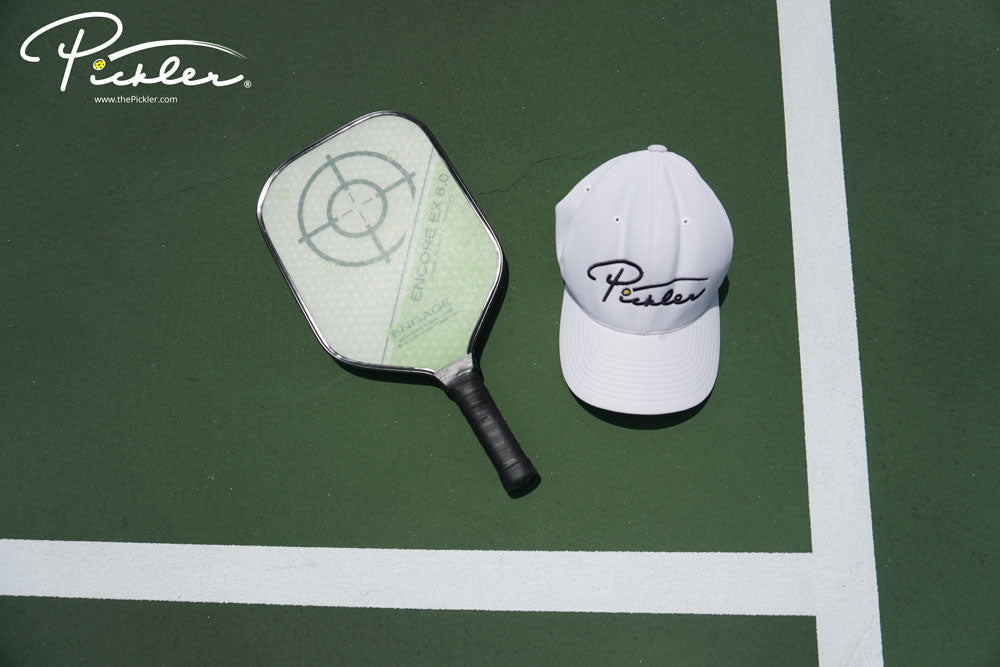
Items on the Pickleball Court
If any item, such as your paddle, hat, or towel, falls onto your side of the pickleball court, then no fault occurs unless such item lands in the Non-Volley Zone as a result of hitting a volley. Further, there is no fault or dead ball even if the pickleball hits any such item.
To continue on the previous commonly misunderstood pickleball rule of player equipment problems, let’s assume that you avoided the fault and the rally continues, as your lost item (e.g. a hat or a towel) fell on to your side of the pickleball court, but outside of the Non-Volley Zone. However, your opponents now return the pickleball back to your side of the court and the pickleball coincidentally hits your hat or towel on your side of the court. The rules of pickleball provide that the rally continues and the pickleball remains in play.
With that said, remember that a fault occurs if the item lands in the Non-Volley Zone in connection with a volley (i.e. the pickleball does not bounce and a player strikes the pickleball in the air). This would be a Non-Volley Zone fault. However, if the lost item lands in the Non-Volley Zone, other than as a result of a volley, then no fault occurs.
In summary, if the pickleball hits an item that fell on to your side of the pickleball court that does not result in a fault, keep playing and keep the rally going!
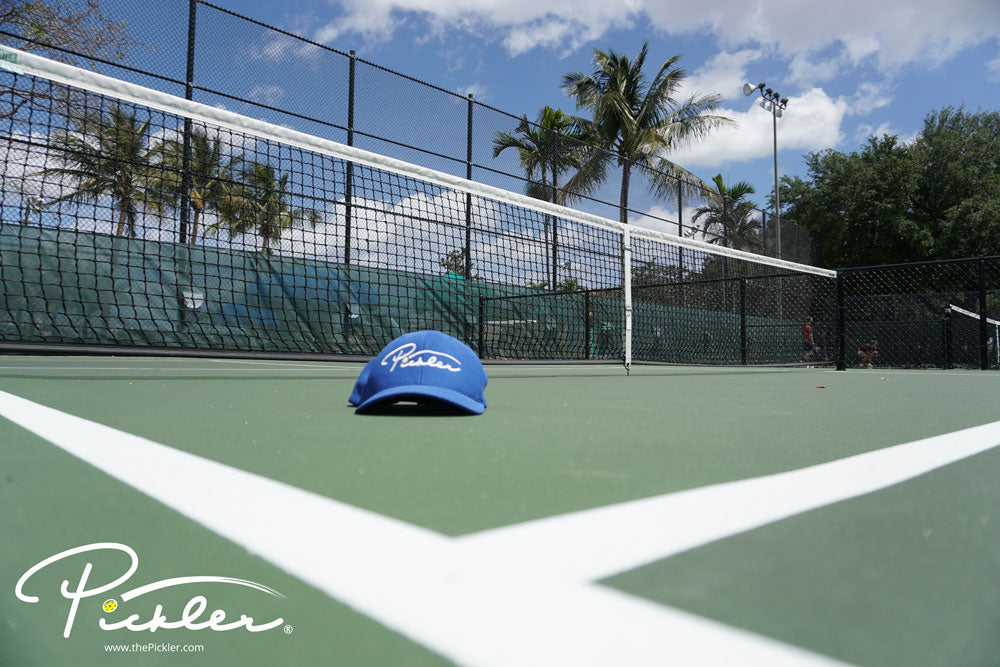
Plane of the Pickleball Net
Another commonly misunderstood rule on the pickleball court is that you may not cross the plane of the pickleball net (or the imaginary extension line of the pickleball net beyond the net posts) until after you hit the pickleball. This includes anything that you are wearing or carrying, such as a pickleball paddle. Phrased another way, you (or your paddle or other item that you are wearing or carrying) may not cross the plane of the pickleball net (or the imaginary extension line of the pickleball net beyond the nets posts) before you have hit the pickleball. If you cross the plane of the pickleball net before you hit the pickleball, then you would have committed a fault and will lose the rally. This rule is most commonly violated in a connection with an Erne attempt. If you attempt an Erne, you must be sure to stay on your side of the pickleball court prior to making contact with the pickleball.
There is one exception to this general rule in that you may cross the plane of the pickleball net before hitting the pickleball if and only if the pickleball bounces and has enough backspin or wind to cause the pickleball to return to the other side of the pickleball court untouched (also known as the “over-and-back pickleball”). In this case, you may cross the plane of the pickleball net (whether over the net, under the net, or around the net post) to hit the pickleball. However, you may not cross the plane of the net until after the pickleball has crossed back over the plane of the net to your opponents’ side of the pickleball court. If you do not touch the pickleball, however, then the opposing team will win the rally.
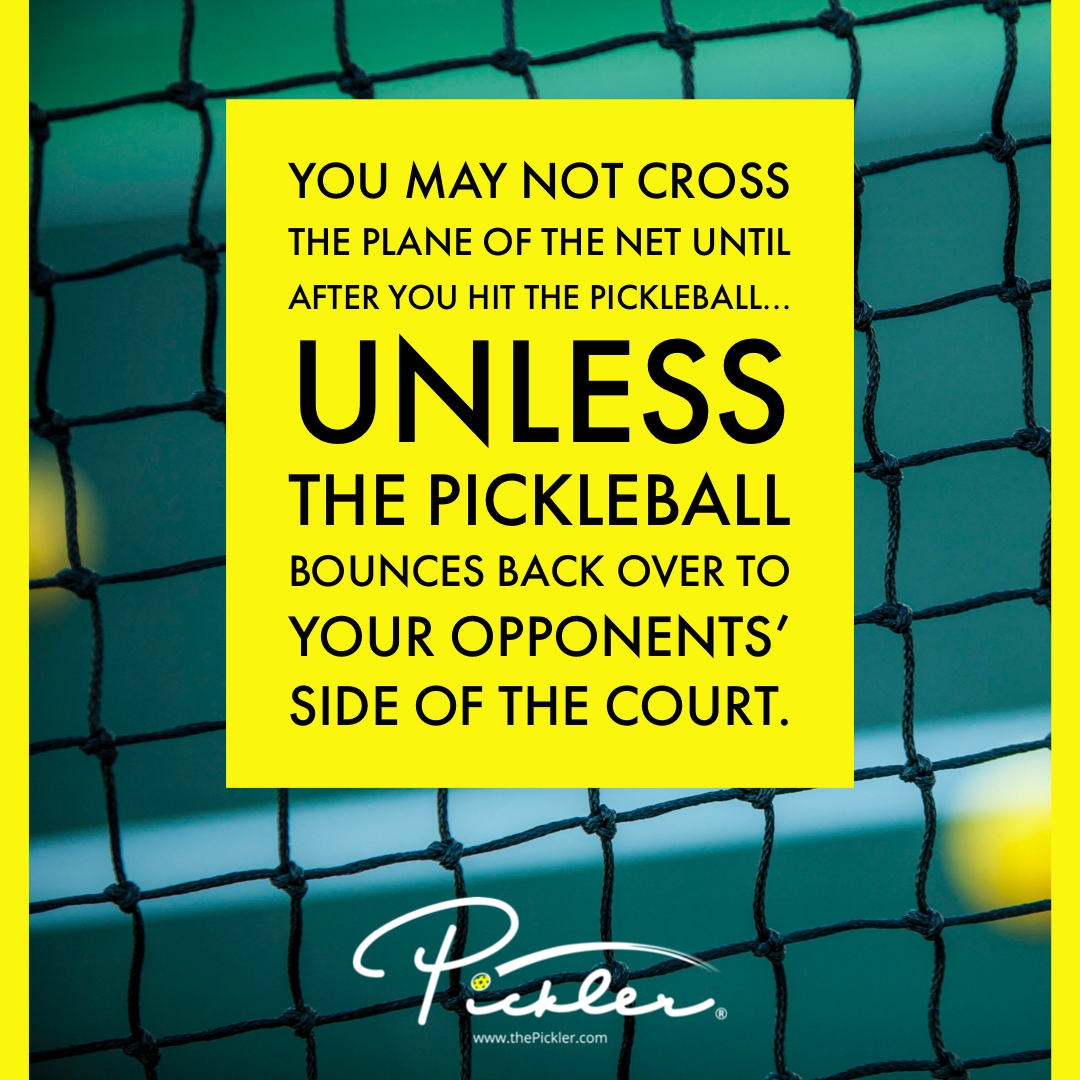
In any case (regardless of whether you hit the pickleball before or after you cross the plane of the pickleball net and regardless of whether the exception described above applies), remember that you may not touch the pickleball net, net posts, net system, or the opposing team’s side of the pickleball court, while the pickleball is “live.” If you do any of these things while the pickleball is “live” – touch the net, net posts, net system, or opposing side of the court – then you would have committed a fault and you will lose the rally.
Distractions on the Pickleball Court
You may not distract an opponent when the opposing team is about to play the pickleball. If you distract an opponent that is about to play the pickleball, then you would have committed a fault. For instance, if you yell at the opponent or otherwise do something to distract your opponent as your opponent goes for an overhead, then you would have committed a fault and will lose the rally.
In pickleball games with a referee, a distraction is based on the referee’s judgment. The referee in competitive play will determine if the distraction caused the opposing team to lose a rally. In pickleball games without a referee, a distraction will only result if all of the players agree. Otherwise, a player may elevate the decision to a referee or tournament director.
With that said, team communication (for instance, saying “nice shot,” “watch the line,” or “get back”) generally does not constitute a distraction. That means that, generally speaking, if you communicate to your partner as the opposing team plays or is about to play the pickleball (i.e. “watch out!”), then no distraction (and no fault) would have occurred. However, there are circumstances where even team communication could cross the line and constitute a distraction. For instance, if you step into the Non-Volley Zone as your opponent is about to play the pickleball and yell “WATCH OUT!” directly at your opponent, then that could be deemed a distraction and you would have committed a fault.
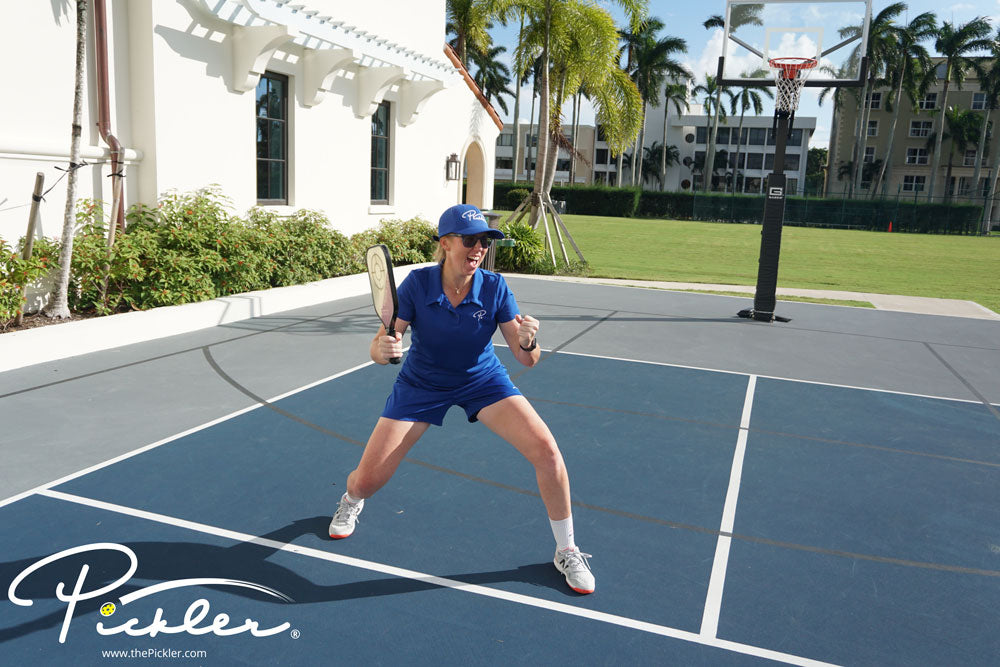
Pickleball Rules Regarding Net Posts
Net posts (including all of the related parts, such as the wheels, arms, and other parts) are positioned out of bounds. As a result, if the pickleball touches the net posts or any of its parts, then the player that last hit the pickleball would have committed a fault and will lose the rally. Further, if you touch the net post or any of its parts while the pickleball is in play, then you would have committed a fault and will lose the rally.
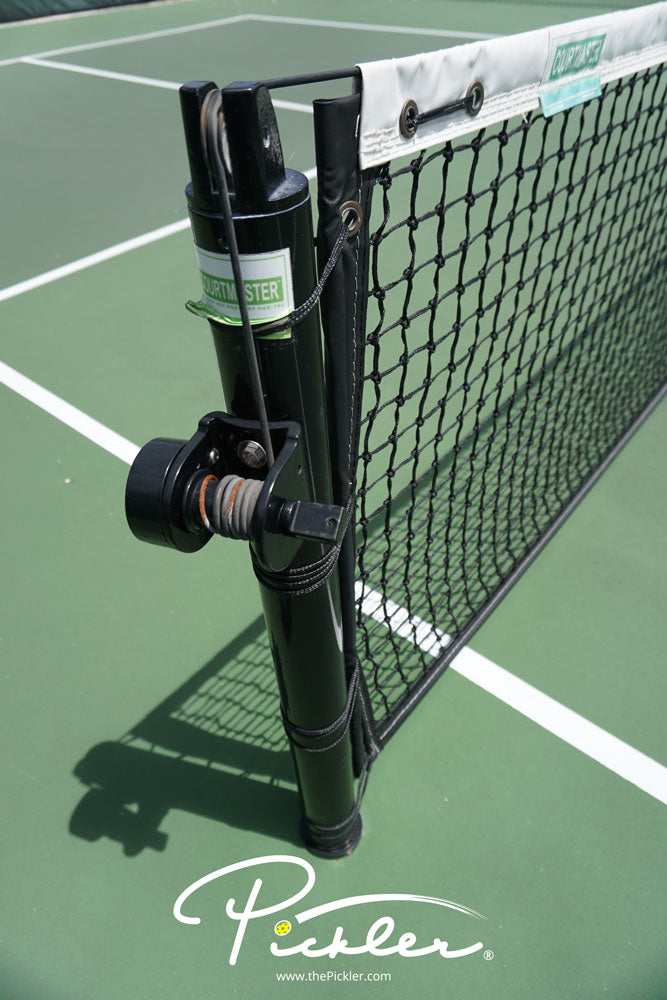
However, it is important to note that the pickleball remains in play if the pickleball hits the pickleball net, the net cord, or rope between the net posts and lands in the court.
Pickleball Rules Regarding the Pickleball Net
The pickleball net (including the net cord) is mostly between the sidelines of the pickleball court. As a result, if the pickleball hits the pickleball net, the net cord, or rope between the net posts, the pickleball remains live and in play (assuming that the pickleball lands in the court). However, the pickleball may not touch any part of the net system or the net posts. Further, you may not touch any part of the pickleball net (including the net itself, the posts, or any other part of the net). If the pickleball does, or you do, touch the net in violation of these rules, then you would have committed a fault. Further, if you hit the pickleball between the net and the net post (and not around the net post), then you would have committed a fault. Also, as a reminder, you may not cross the plane of the pickleball net until after you hit the pickleball.
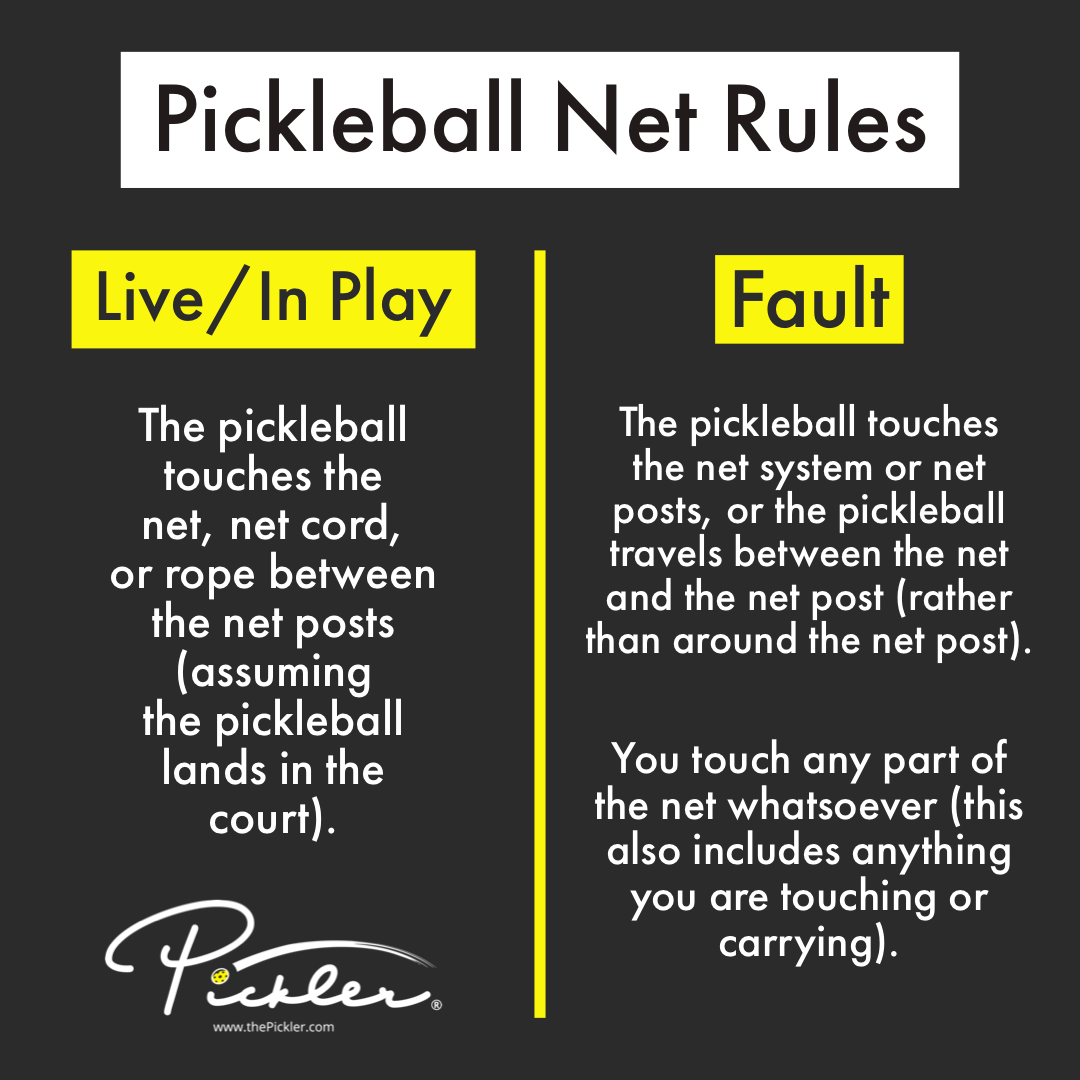
Temporary Pickleball Nets with a Horizontal Bar
There are a few pickleball rules specifically related to temporary pickleball nets with a horizontal bar. These include the following:
- Before traveling over the pickleball net, if the pickleball hits the horizontal bar or center base, then the player that hit the pickleball last would have committed a fault and will lose the rally.
- If the pickleball travels over the pickleball net and then either (a) hits the horizontal bar or center base (before or after the bounce), or (b) gets stuck between the net and the horizontal bar (before or after the bounce), then it is a let and the point will be replayed. However, this rule does not apply on the serve.
- If a serve goes over the pickleball net and then either (a) hits the horizontal bar or center base (before or after the bounce), or (b) gets stuck between the net and the horizontal bar (before or after the bounce), the server would have committed a service fault and will lose the rally.
- Any malfunction of the temporary pickleball net during a rally will be a hinder and the players will replay the point.
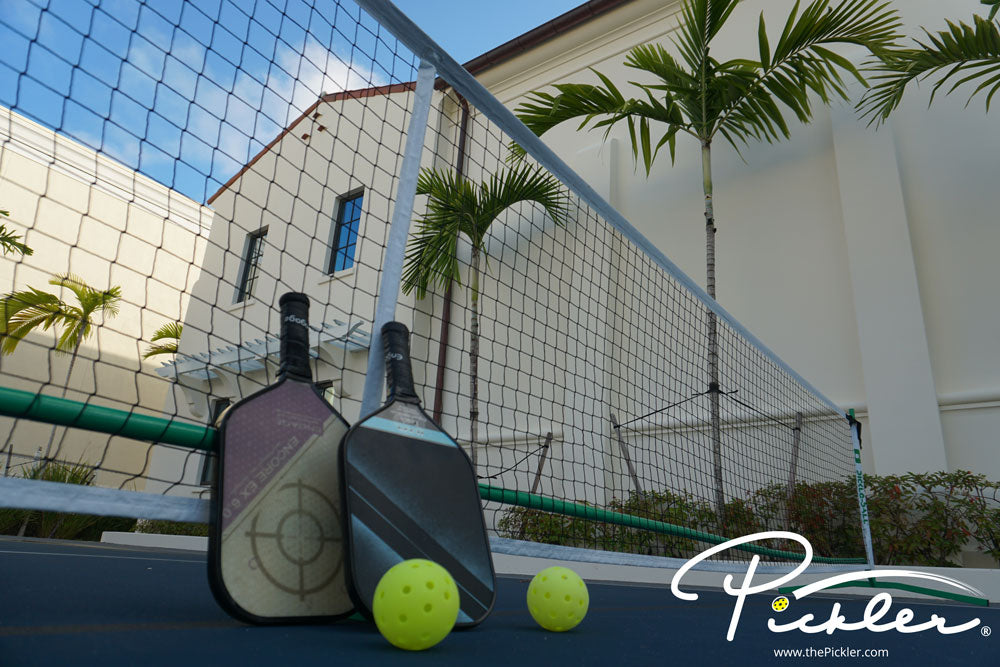
Around the Post Shots on the Pickleball Court
Shots around the post (also called “ATPs”) are permitted on the pickleball court. The pickleball does not have to travel over the pickleball net. Rather, the pickleball may travel around the net post to the other side of the pickleball court. The pickleball may be below the height of the pickleball net when hitting an ATP. To note, however, if the pickleball travels between the pickleball net and the net post, then the player that hit the pickleball would have committed a fault.
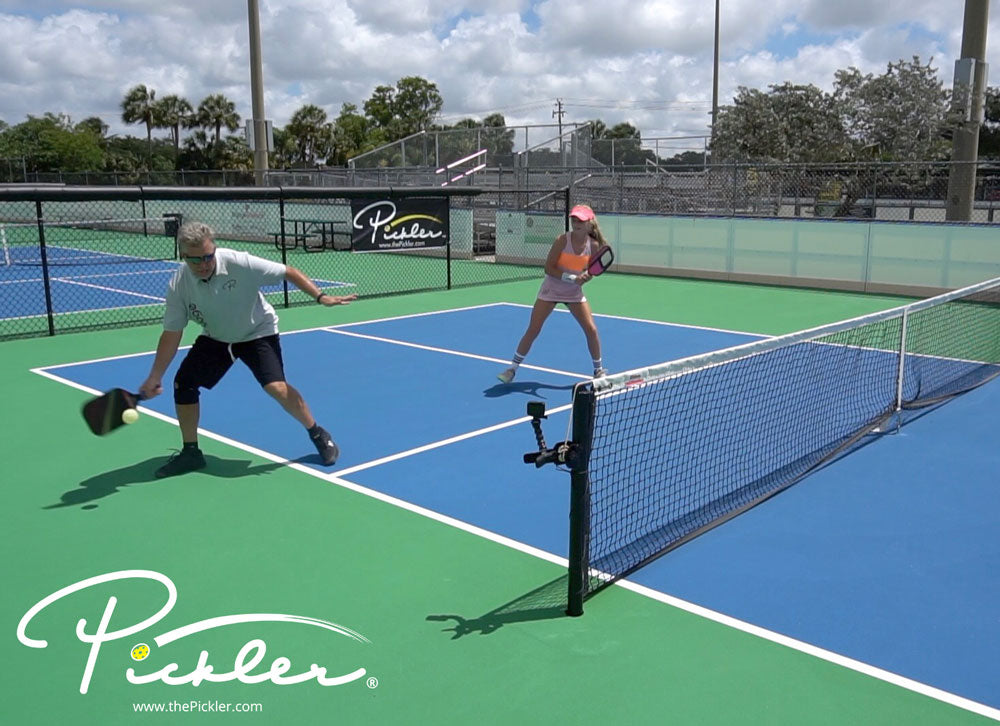
Coaching in Pickleball
Coaching on the pickleball court is any communication, in any form (verbal, non-verbal, or electronic), from any person other than a player’s partner that has the goal of giving the player a competitive advantage. Coaching during pickleball matches by any person that is not playing on the pickleball court is only permitted between games and during time-outs. Coaching is not permitted at any other time during a pickleball match. However, players on the pickleball court may communicate with each other – in other words, partners may communicate and coach each other on the pickleball court.
If any coaching occurs during a pickleball match (other than between games or during time-outs), then the referee will give a technical warning to the violating player or team. If the coaching happens a second time (other than between games or during time-outs), then the referee will give a technical foul to the violating player or team, which will result in a loss of a point (unless the offending player’s or team’s score is zero, in which case, a point will be awarded to the opposing team).
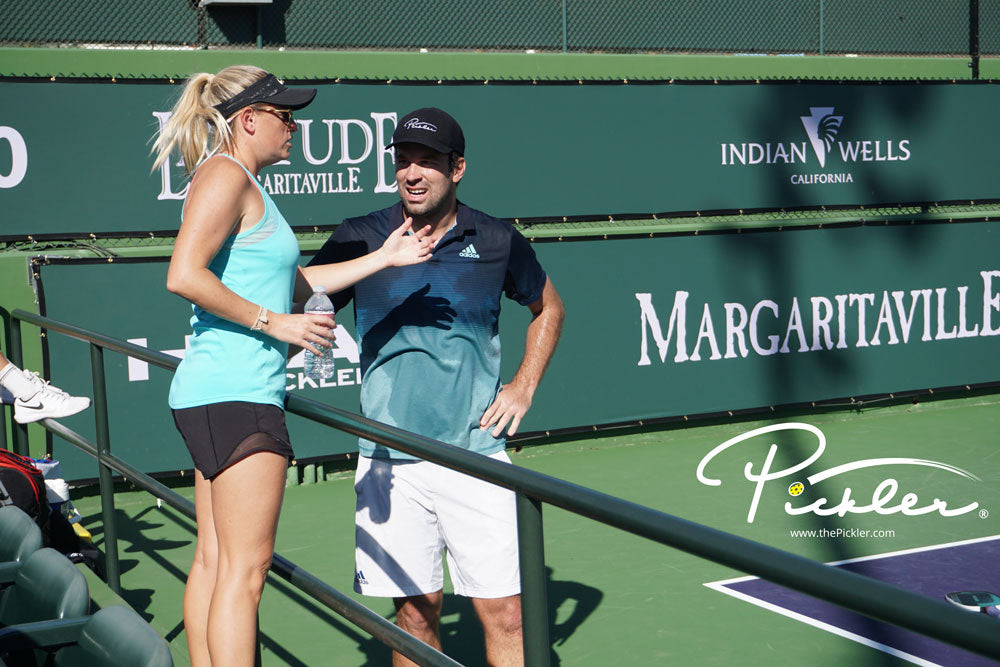
Other Pickleball Paddle Rules
You may only use one pickleball paddle while playing pickleball. You must have possession of your pickleball paddle when you make contact with the pickleball. If you use more than one pickleball paddle, or if you do not have possession of your pickleball paddle when you make contact with the pickleball, then you would have committed a fault and will lose the rally.
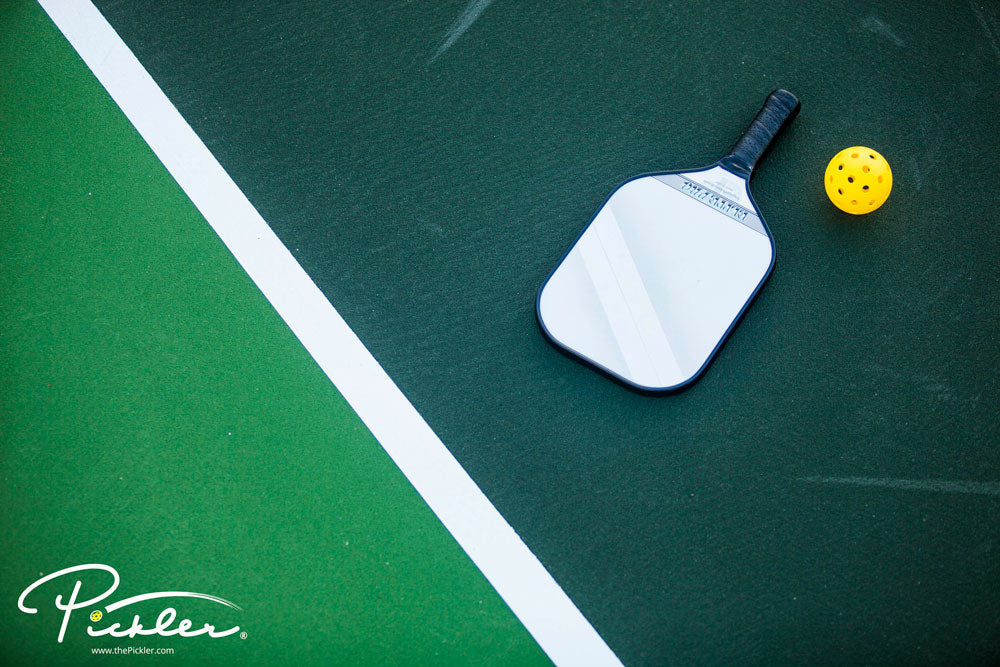
Looking for More Pickleball Rules?
We know pickleball rules can be tricky at times. Don’t worry. Pickler explains the ins and outs of all of the pickleball rules in a series of pickleball rules blogs to make sure that you make the right call on the pickleball court. Learn more by visiting Pickler’s pickleball rules blogs that are linked below!
- Pickleball Rules – The Ultimate Guide to the Rules of Pickleball
- 10 Must Know Pickleball Rules Before Your Hit the Court
- 10 Pickleball Rules Changes to Learn for 2021
- Pickleball Rules – Learn How to Start – 5 Things You Need to Play
- Pickleball Dictionary – Quickly Learn the Pickleball Vocabulary
- Pickleball Serving Rules – Master the Start of Every Pickleball Game
- Pickleball Scoring Rules – Learn How to Keep the Score in Pickleball
- Pickleball Kitchen Rules – Learn Important Non-Volley Zone Rules
- Pickleball Line Call Rules – How to Make the Right Call
- Pickleball Rules – Faults & Dead Balls on the Pickleball Court
- Pickleball Rules – Commonly Misunderstood Rules in Pickleball
- Pickleball Tournament Rules – Must Read Before a Tournament
- Singles Pickleball Rules – How to Play Singles Pickleball
- Wheelchair Pickleball Rules – How to Play Wheelchair Pickleball
LOOKING FOR MORE PICKLEBALL TIPS, STRATEGIES & INFORMATION?
For more pickleball tips, strategies, and other information, check out Pickler’s Pickleball Guide and Pickleball Blog!

